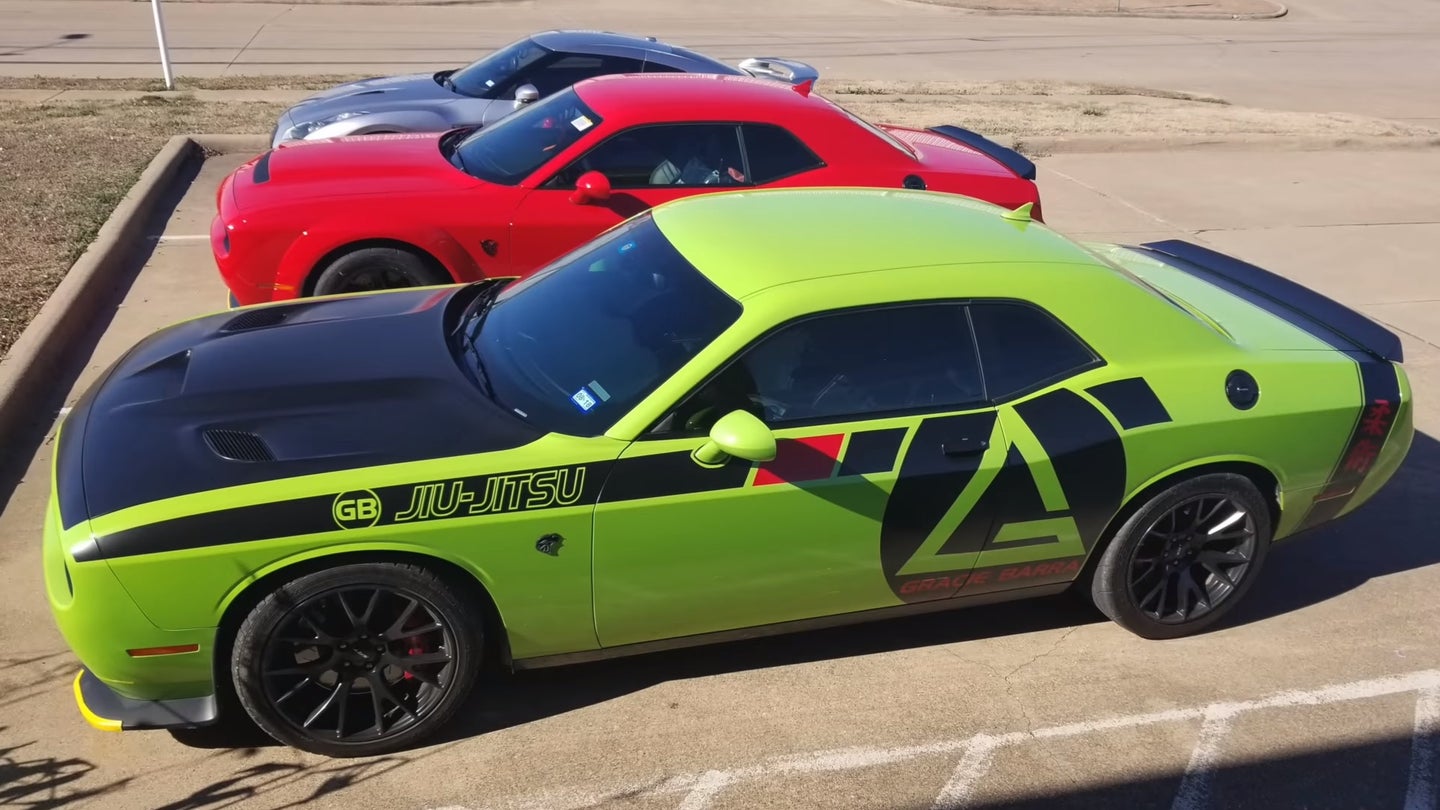Here’s How Much Power the Dodge Hellcat and Dodge Demon Really Make on the Dyno
More than you’d think, and less than you’d think.

Now that the hype machine has slowed down and dealer markups appropriately shamed, the 840-horsepower 2018 Dodge Challenger SRT Demon is finally out there in the hands of living, breathing, real-world drivers. We'll let that sink in for a bit, and move on to the essential question: how much power does it really make at the wheels? And more importantly, how does it stack up with the cheaper Dodge Hellcat?
Fortunately for us (and science), there are people who are picking up what Dodge is putting down so much that they went out and bought both cars. One such owner is the man behind the YouTube channel Demonology, who has a 2015 Hellcat and a brand-new 2018 Demon. We know the Hellcat and Demon are rated at 707 and 808 horsepower, respectively. (The latter's 840 horsepower rating comes from an extra performance power control module included in the Demon Crate, which Demonology hasn't installed yet.)
But we also know that those official numbers are measured at the engine crank, whereas the number found where the rubber meets the road can be anywhere from 10 to 20 percent less thanks to parasitic drivetrain power loss—turning those beefy 315/40R18 rear tires isn't easy. And both the Demon and Hellcat featured in the video are completely stock, so they're perfect candidates for this measuring contest.

(Skip to 3:05 and 8:30 for the two tests.)
Well, almost perfect candidates. The Hellcat has traveled 42,000 miles over its three years on the road, which means it's completely broken in and ready for a hard pull on the dyno. But with only a few hundred miles on it, the Demon is well within its break-in period; you can see it's still sporting the dealership window sticker in a few shots.
There are two ideological camps when it comes to breaking in engines. One is that since manufacturers wring them out fresh off the line in the factory, a few hard pulls now and then won't hurt in the first 500 miles. The other is that break-in periods are prescribed for a reason, to protect an incredibly complex and expensive machine from unnecessary damage as everything settles in. And in fact, the Demon has its own mandated probationary period: The line lock, transbrake, and launch control functions are unavailable until 500 miles.
That might explain the results. The Dodge Hellcat put down 670 horsepower and 618 lb-ft of torque at the wheels, which is only about a 5 percent drop from the factory ratings. Meanwhile, the Demon managed 704 whp and 676 lb-ft of torque, which is a 13 percent drop. Assuming the stock Hellcat isn't magically underrated, the Demon is still stretching its legs at this early stage. And of course, we'll also have to see another test with the upgraded 840-horsepower PCM and other Demon Crate goodies installed.
